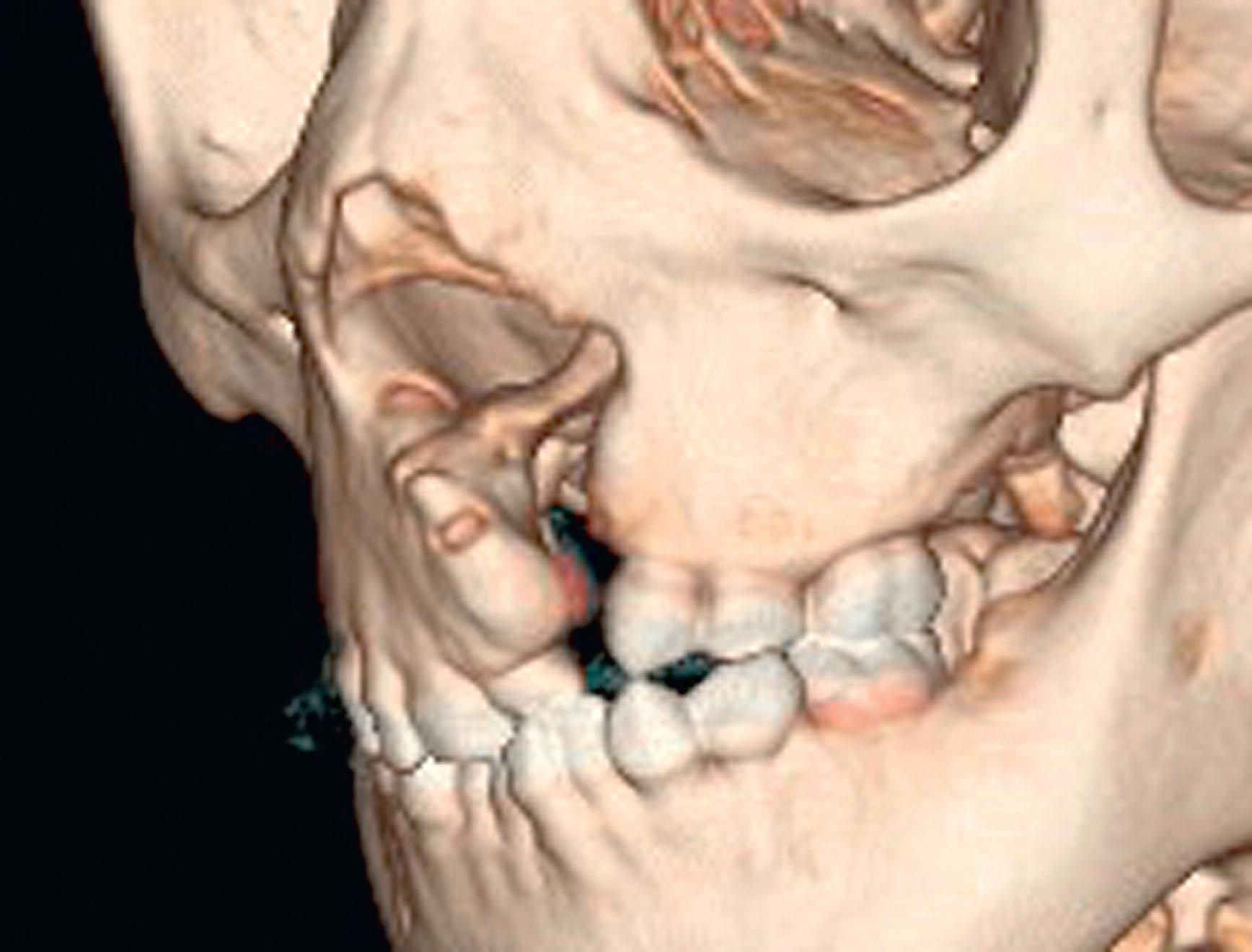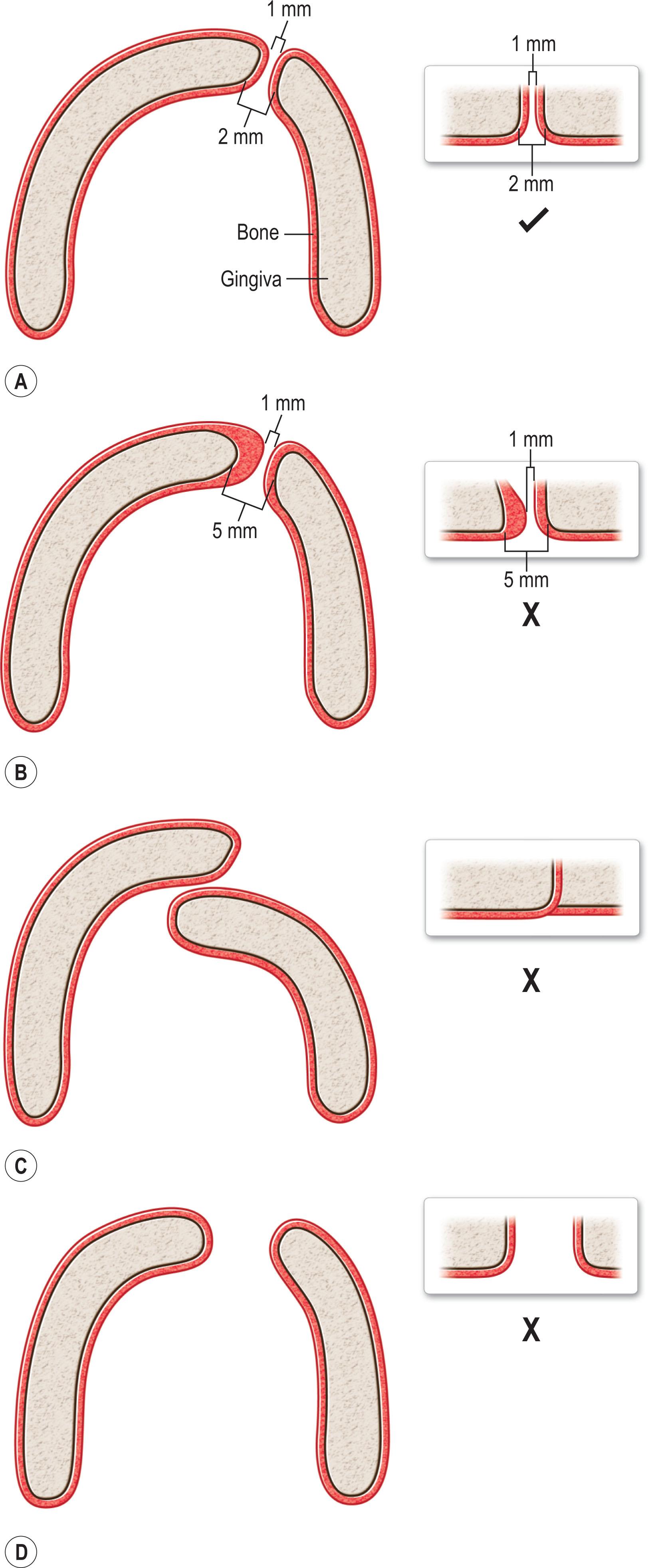Physical Address
304 North Cardinal St.
Dorchester Center, MA 02124
There is still much debate regarding the optimal treatment for alveolar reconstruction in cleft care.
Current treatment protocols differ regarding timing of repair, graft material, and surgical technique.
Secondary alveolar autogenous bone grafting remains the standard of care.
Pioneering research has demonstrated that use of alternative treatments and osteoinductive graft adjuncts can provide similar results to autogenous bone graft; these initial findings warrant further comparative investigation.
Careful pre-, peri-, and postoperative planning, involving both the surgeon and orthodontist, is critical in management of alveolar clefts, regardless of the particular treatment pathway implemented.
Iliac crest bone graft (ICBG) is still considered the optimal material for alveolar cleft repair, yet recombinant human bone morphogenetic protein-2 (rh-BMP-2) is a viable alternative in small defects.
Access video content for this chapter online at Elsevier eBooks+ ![]()
The treatment of alveolar clefts was first reported in the literature in the mid-1950s. Since then, multiple treatment options have arisen, yet the optimal treatment strategy for alveolar cleft reconstruction is still debated. Given that alveolar clefts affect 75% of patients with cleft lip and/or palate, a standardized treatment algorithm would be beneficial. The goals of treatment of an alveolar cleft are listed in Box 21.7.1 . However, there does not appear to be a single treatment strategy that achieves all goals while reducing the surgical and financial burdens. While great results can be achieved, they may not be generalizable and reproducible to the global population with clefts.
Restore bony continuity of the maxillary arch
Approximate maxillary arch form and transverse width
Close any existing oronasal fistula, separating the oral and nasal cavities
Facilitate development of periodontally sound environment for the eruption of lateral incisors or canine teeth into newly formed alveolar bone with keratinized gingiva
Improve morphology of the alar base for sufficient bony support
Increased bone volume for dental implants, if required
Consider effects of surgery and timing on continued midface development
Schmid, Schrudde, and others in the mid-twentieth century advocated for primary alveolar bone grafting during the deciduous stage of dental development. Although primary alveolar bone grafting is still utilized in some institutions, this practice has largely fallen out of favor due to concerns for iatrogenic facial growth disturbance. In response to these concerns, Boyne and Sands (1972) published their landmark article on secondary alveolar bone grafting by advocating for bone grafting during mixed dentition to support dental eruption of adult teeth while minimizing facial growth impairment. Many of the article’s described principles are still used today, and now secondary alveolar bone grafting has become the standard of care for alveolar cleft reconstruction. Alternate protocols have subsequently been developed, namely tertiary bone grafting (bone grafting during permanent dentition) and gingivoperiosteoplasty (GPP). Alternatives to autogenous bone grafts with biomaterials have also spearheaded varying treatment protocols with unprecedented translational success in the last decades.
The optimal treatment strategy for alveolar cleft reconstruction remains a point of controversy among providers in cleft care. This chapter strives to discuss the various treatment protocols as well as elaborate on modern innovations in the treatment of alveolar cleft reconstruction, specifically referring to recombinant human bone morphogenetic protein-2 (rh-BMP-2) with a demineralized bone matrix (DBM) and nasoalveolar molding followed by gingivoperiosteoplasty (NAM-GPP). Practitioners in cleft care should understand the advantages and disadvantages of all options of alveolar cleft treatment regardless of their protocol of choice.
Within orofacial clefts, an alveolar cleft should be considered an extension of the cleft lip deformity rather than one of the cleft palate. This distinction is made more evident by understanding the embryologic cleft development of cleft lips, alveolar clefts, and cleft palate. The primary palate, or portion of the palate anterior to the incisive foramen is formed along the upper lip and alveolus. The outgrowth of the intermaxillary segments or premaxilla connecting to the upper lip and alveolus forms the primary palate. When the segments do not form or do not fuse together to form the alveolus, a cleft of the maxilla can form. This is different from the cleft palate.
An alveolar cleft consists of a soft-tissue and bony defect in the maxillary arch, extending from the soft tissue of the alveolar process to the base of the nasal cavity in the shape of an inverted pyramid. The bony defect can be as small as a notch in the alveolar process or as large as a maxillary cleft, extending from the anterior nasal spine to the incisive foramen, with the bony defect increasing in size from the incisal portion of the alveolar process to its widest point apically at the nasal cavity ( Fig. 21.7.1 ). The connection between the oral and nasal cavities has three distinctive boundaries. The nasolabial fistula at the labial sulcus is comprised of loose wet labial mucosa transitioning to nasal mucosa. The oronasal fistula spans from the incisive foramen to the alveolar process and consists of palatal mucoperiosteum transitioning to nasal mucosa. These two fistulas converge at the alveolar process lined with attached alveolar gingiva. The deficiency of bony support to the overlying soft tissue can cause the base of the alae to be positioned posteriorly, further contributing to the cleft nasal deformity.

Given the variability in dental pathology associated with alveolar clefts, a comprehensive surgical–orthodontic plan must be established. This makes it beneficial for a cleft and craniofacial team to have a craniofacial orthodontist familiar with variable anomalies seen in patients with cleft lip and palate. Patients may present with hypodontia, supernumerary dentition, malpositioned dentition, and/or distorted dentition. One of the goals of alveolar cleft repair is to create an environment able to support the adult lateral incisor (if present and appropriately positioned) and to support the adult canine eruption. Integral to successful bone grafting is the presence of adequate native bone surrounding the graft site. If intervening dentition is present, it may need to be extracted as dental cementum does not support bone growth. Dental extraction then allows for greater bone–graft contact, and subsequently promotes graft success. Further, maxillary expansion and pre-surgical dental extractions have both been associated with better outcomes through improved operative access and less surgical site trauma at time of grafting. Pre-surgical orthodontics are particularly important in patients with a bilateral cleft because premaxillary displacement is often severe.
GPP involves replacement of the alveolar cleft soft-tissue barrier with a gingivoperiosteal tunnel, which facilitates growth and healing between the adjacent bone segments without the need for grafting. Given the vast anatomical variations in patients with cleft lip and/or palate, not all infants are candidates for GPP. Pre-surgical molding aims to approximate the bony gap, allowing for a more robust repair. Inclusion criteria for GPP are a small bone gap, non-collapsed and mesenchymal-rich arch, and well-aligned bone segments.
Candidates for GPP must first be evaluated by both the surgeon and coordinating practitioner, who will assist with pre-surgical molding. If both the alveolar anatomy and pre-surgical molding are satisfactory, a patient can be offered GPP simultaneously with primary lip repair ( Fig. 21.7.2 ). Notably, GPP does not preclude alveolar bone grafting but could reduce the need for alveolar bone grafting in cases where GPP successfully forms bone between the bony segments.

Primary bone grafting is performed at the deciduous stage of dental development in infants younger than 1 year old. Traditionally, the bone graft material is autogenous rib or iliac crest, although other donor sites including the mandible, tibia, and calvaria have also been used. Primary bone grafting emerged as the first treatment paradigm for alveolar cleft repair but has since fallen out of favor due to concerns about facial growth restriction. Others argue that the negative growth effects of primary grafting are no worse than those of secondary grafting. However, Chang et al . investigated this subject and found no significant differences in maxillofacial growth between secondarily grafted and ungrafted unilateral complete cleft lip and palate patients. These findings thus suggest that growth restriction is not associated with secondary alveolar bone grafting.
Overall, there is a paucity of studies in the literature demonstrating the use of grafting at the time of primary dentition. One center has been implementing primary bone grafting in alveolar cleft reconstruction for over 20 years. Patient selection by this group is contingent upon the family’s ability to adhere to the orthodontic appliance protocol involved in the maintenance of arch relationship pre- and postoperatively.
Become a Clinical Tree membership for Full access and enjoy Unlimited articles
If you are a member. Log in here